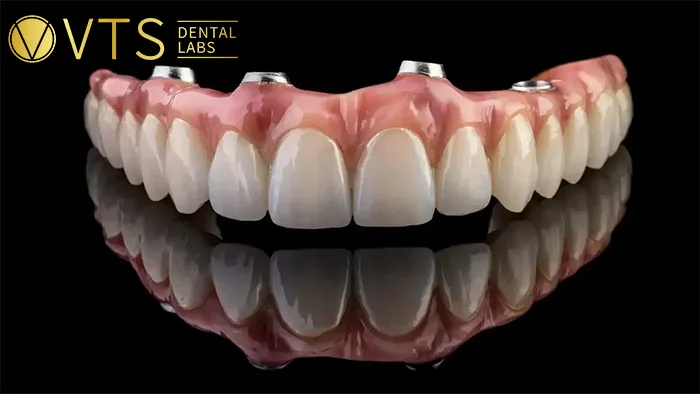
If zirconia crowns have been the preferred restorative solution recently, PFM crowns (Porcelain-Fused-to-Metal) have remained a staple in restorative dentistry for decades. PFM crowns are a traditional prosthetic option praised for their durability and the natural aesthetics provided by the porcelain overlay. They remain a primary choice for patients, prioritizing strength and functionality over aesthetics.
This article provides an in-depth overview of the advantages and disadvantages of PFM crowns, assisting dentists in selecting the most suitable option for their patients.
Porcelain-fused-to-metal (PFM) crowns are dental prosthetics composed of a metal substructure fused with an outer layer of porcelain. The metal framework ensures exceptional resistance to occlusal forces, making PFM crowns highly durable and suitable for posterior restorations, although they can also be used for anterior teeth.
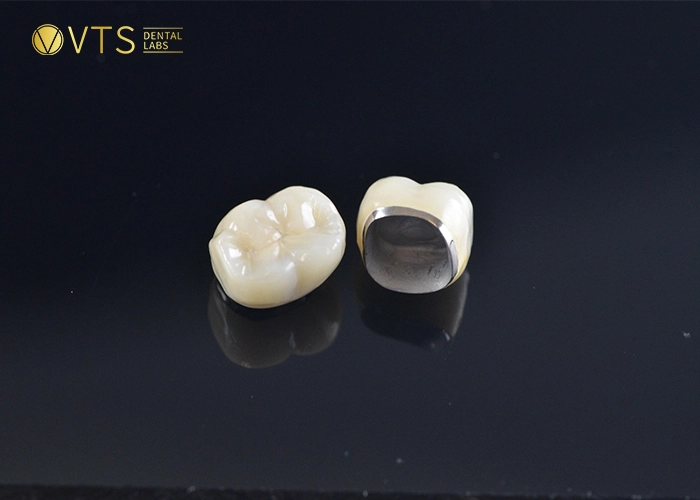
An overview of PFM crown
The materials used in producing PFM crowns vary based on the preciousness of the metal content.

PFM high-noble
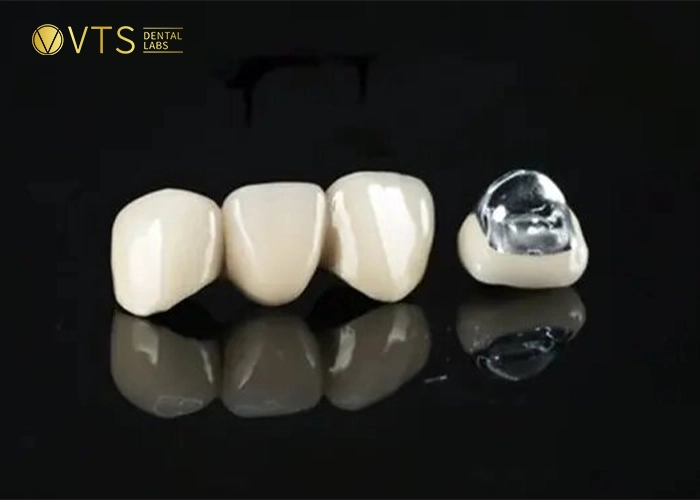
PFM semi-precious
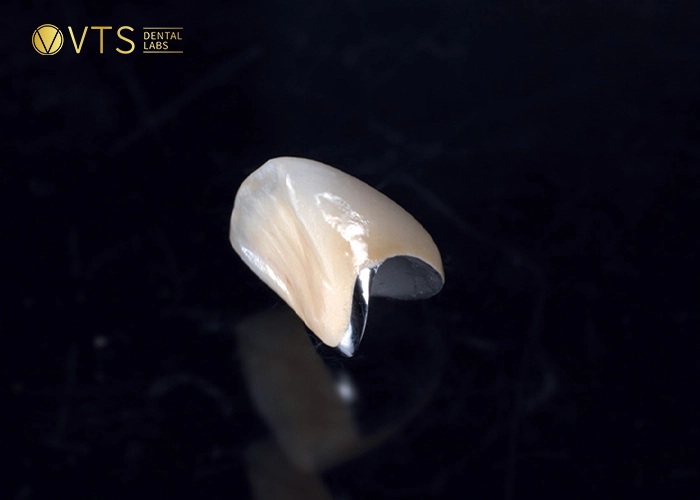
PFM non-precious
In terms of safety and reliability, PFM crowns are recognized globally, and millions of successful cases are performed worldwide.
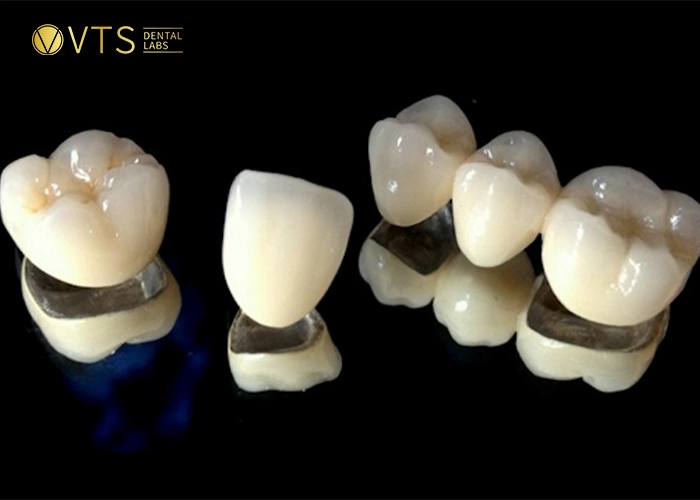
Despite having many outstanding advantages, PFM crowns still have certain drawbacks that are hard to overcome. Due to the metal core structure, an opaque layer is applied to cover it; however, the metal may still be slightly visible, lacking translucency and a natural appearance. In cases of gum recession, the dark metal margin can become exposed, compromising aesthetics.
While the metal framework is sturdy and durable, the porcelain layer on the outside can chip or crack due to its lower strength, especially in patients with bruxism. The porcelain layer may cause slight wear on the natural teeth of the opposing arch, particularly if the surface is not polished thoroughly. It is not suitable for individuals with metal allergies.
When directly comparing durability, Zirconia crowns offer greater hardness and wear resistance, making them suitable for both posterior and anterior teeth. In terms of aesthetics, Zirconia crowns also outperform PFM crowns as they lack a metal margin. However, PFM crowns remain a more cost-effective option in many cases since Zirconia is more expensive.
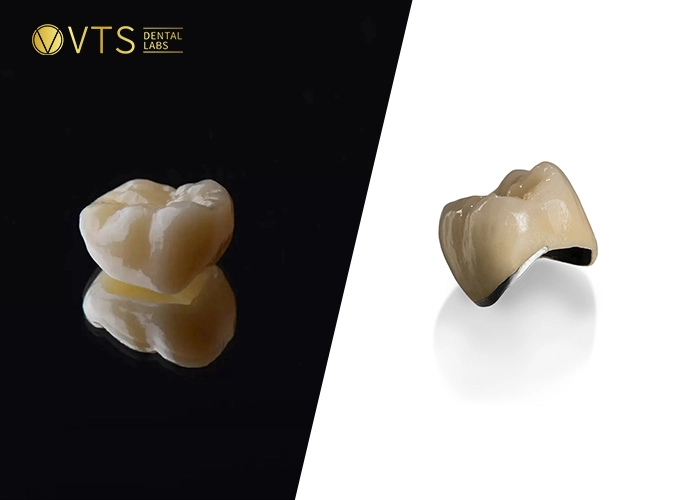
PFM vs. Zirconia
Full-cast metal crowns are more durable, particularly for cases involving heavy chewing forces. However, their aesthetics are limited as they lack a porcelain layer and are entirely metallic in color. As a result, Full-Cast Metal crowns are often preferred for posterior teeth that are less visible or for patients prioritizing durability over aesthetics.
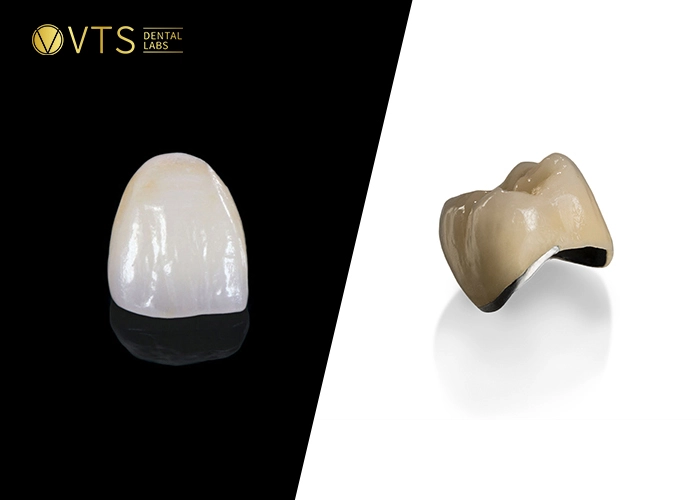
PFM vs. Full-Cast Metal
E.max crowns exhibit superior translucency and light-reflecting properties, offering a more natural appearance compared to PFM crowns. It makes the production process for E.max crowns more complex, and the cost is significantly higher than PFM crowns. However, E.max crowns are less durable than PFM crowns, especially for posterior teeth subjected to heavy chewing forces.
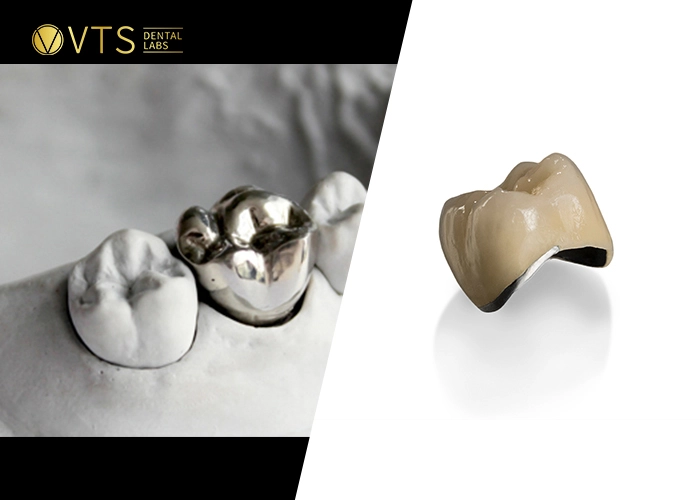
PFM vs. E.max
Choosing the right restoration type depends on the patient’s needs and condition, but durability and suitability for personalized cases must always be ensured.
PFM crowns remain a reliable choice in restorative dentistry due to their perfect balance of durability, aesthetics, and cost-effectiveness. Despite certain limitations, PFM crowns are still an optimal choice for various clinical cases. To achieve optimal restorative outcomes, dentists should carefully consider the specific needs of patients.
VTS Dental Lab provides a wide range of high-quality restorations tailored to individual cases. For more information, please contact our office now.
